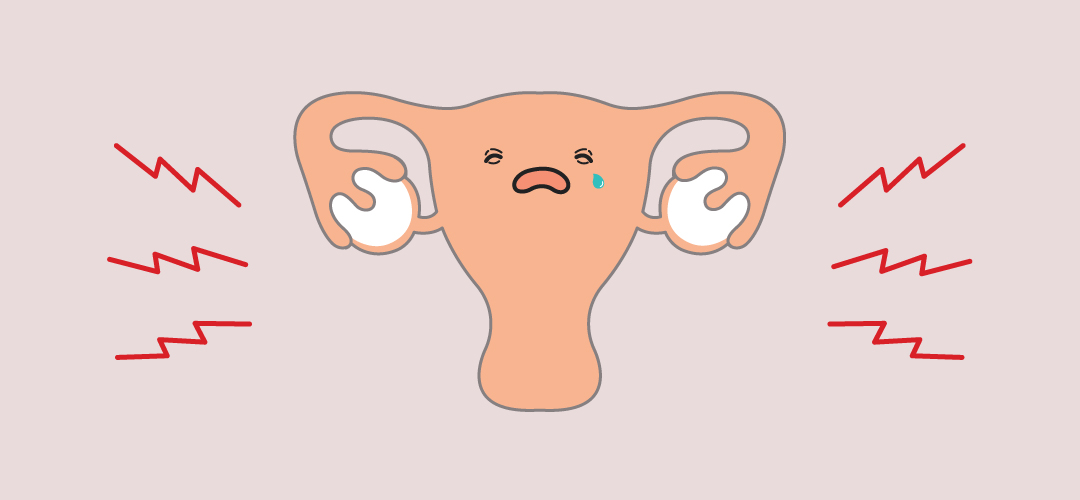A recent report published by the American College of Obstetricians and Gynecologists says that a woman's period ought to be treated as a vital sign - the same way we look at blood pressure, pulse and temperature.
While there may be some fluctuations in volume and color, obstetricians and gynecologists have figured out average indications of healthy blood and the warning signs that accompany anything that looks different.
When that time of the month rolls around, it could be a good idea to check in on your own physical health. Take a look at the indicators below - what's your body trying to tell you?
Bright Red Blood

While everyone is a little different, if your flow generally looks bright red, kind of like cherry Kool-Aid, it's a good sign that everything is tickity-boo with you.
You'll see this at the beginning of your cycle, as the uterine lining is shedding new blood at a high rate. If it happens at a different point in your cycle, or occurs with abnormal cramping, there's a possibility that it indicates a miscarriage or a ruptured ovarian cyst.
If you're concerned, check with your doctor.
Brown or Black Blood

Since this blood has been stored up for the longest, you'll notice it more at the end of your period. It typically comes out in a light flow or spotting.
Some women might also notice this at the beginning of their periods - don't worry, that's normal too. It's just blood that has had time to oxidize, which is why it comes out looking brown or black.
Lighter - Pinkish Blood

There are a few factors that contribute to a lighter-colored period, so you'll want to perk up and pay attention if you spot this color in your panty liner.
It could indicate low estrogen levels.
Studies indicate that excessive, intense exercise can lower estrogen levels. So, if you've taken up intense physical activities, like marathon running, and you've noticed this happening, check with your doctor.
Left unchecked, low estrogen can increase your risk of osteoporosis.
Other possibilities include: poor nutrition, polycystic ovary syndrome (PCOS), or perimenopause. As always, check with your doctor when you notice a change in your body's natural menstrual flow.
Watery Blood
This could indicate a nutritional deficiency. Monitor your period for about three cycles. If you nothing changes, talk to your doctor about getting tested for deficiencies.
How much is too much? Find out what your body's saying when Aunt Flo comes to town!
Let's be real, no one loves "leak week." If there's one thing we can take away from it (besides PMS, cramps and all the binge-eating), it's that women have one more way to check in on how their bodies are doing.
Paying attention to what's going on downstairs during shark week can provide key insights into how your hormones are doing. Healthy hormones keep your brain and your reproductive system running smoothly.
Any changes in your regular monthly could indicate something bigger happening in your body. Find out what it could mean and if you need to schedule an appointment with your family doctor.

Super Heavy Periods
If it looks like the scene from Carrie in your pad, or if you're soaking through 16 sanitary pads per menstrual period, you could have menorrhagia.
This kind of heavy flow is common in teens and women going through perimenopause. But, it could also indicate iron deficiency or anemia.
If you bleed through pads or tampons in less than an hour, regularly feel tired, or have to wake up at night to change your pads/tampons several times, ask to get your iron levels checked.
Irregular Periods

It's fairly common for teenage girls to have periods that fall outside of the average 28-35 day cycle.
However, after the first few of years of menstruating, irregular periods could be a sign of polycystic ovarian syndrome (PCOS). Light spotting between periods could be a sign of a sexually transmitted disease (STI) like chlamydia. Check with your doctor to be sure.
Thick, Jam-Colored With Large Clots

This might indicate high estrogen levels and low progesterone.
Some clotting is normal, but anything above the size of a quarter could indicate a serious hormonal imbalance. Try limiting how much dairy, soy and sugar you consume and see if that helps.
It could also indicate the presence of uterine fibroids. While most often benign, they can be painful. If you think this is the case, ask your doctor about them and see if you can get an ultrasound.
Grey-Red Mix
You might have an infection. If you notice your blood is red/grey accompanied by a foul, rotting smell, you might have an STD/STI. You'll want to schedule an appointment to get the appropriate treatment as soon as possible.
Women who miscarry may also notice gray chunks of tissue. If you think that you could be pregnant, or that you are having a miscarriage, call your doctor immediately.
Bonus Sign: Painful Cramps

While they might not necessarily have a color, period cramps can definitely have you seeing red. As our bodies produce chemicals that encourage the uterus to contract and push out what's inside, these contractions briefly pinch off blood supply to the uterus, causing waves of pain.
It sucks, but it's normal - most of the time.
If the pain is so bad that you can't even get out of bed, it could be a sign of endometriosis. It's a painful condition where the tissue that normally grows inside the uterus starts to grow outside of it.
Other symptoms of endometriosis include super heavy periods, nausea and constipation. If you're experiencing this, let your doctor know, there are treatments for this condition!
Was this helpful? Pass it on!
[h/t Prevention / Glamour / Center for Menstrual Cycle and Ovulation Research]

